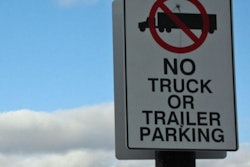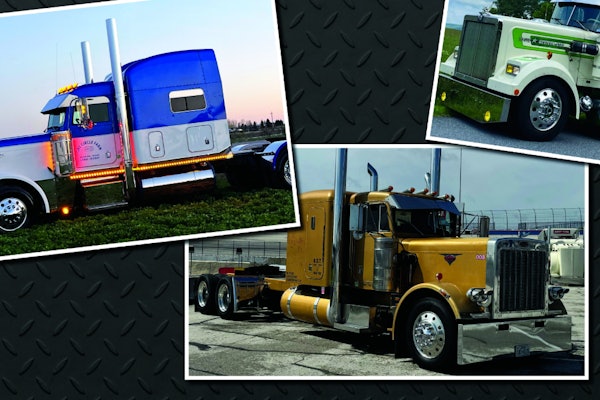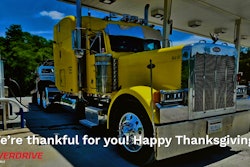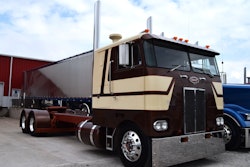By Randy Grider
Editor
[email protected]
I caught up with Silvano Mendoza inside the Landstar yard in Laredo, Texas, at approximately 3 p.m. The 38-year-old resident of Nuevo Laredo, Mexico, was making his third delivery of the day.
Mendoza is a drayage driver – a person who shuttles cargo across the United States-Mexican border. For 25 crossings a week, he will earn about 5,000 pesos or $500 in U.S. money.
“This is a good job,” Mendoza says. “For those of us who live in Mexico in the border area, this is a job that can make you more money than any other.”
But the job has its drawbacks, mostly because of the cumbersome way cargo is processed and moved across the border. “The lines get really long over the bridge, and customs of Mexico and that of the United Sates work too slow,” Mendoza says. “Sometimes it gets to your nerves.”
Depending on which side of the border freight is heading, a shipment may be hooked to several tractors or offloaded onto other trailers in the border processing. A load arriving at the border may take eight hours or more to clear from the time it first reaches a distribution center or warehouse. It’s a procedure that involves brokers, freight forwards, drayage operations and customs officials. The closed border and its commercial zones are definitely not a work of streamlined efficiency.

Still, thousands of loads are moved across the border each week in Laredo, the largest land port in the United States. And thanks to North American Free Trade Agreement, trade between the two countries has grown dramatically over the past decade.
This month our cover story (on page 20) looks at the myths and realities of the much-rumored “NAFTA Superhighway.”
Its roots start here in Laredo, where I-35 begins, and with the state’s proposed Trans-Texas Corridor.
I also found there are a lot of preconceptions about NAFTA and the border. One of the biggest involves Mexican trucks and whether they meet the standards of U.S. trucks. With Mexico lagging behind the United States in emissions regulations, there are some real concerns about pollution. But that is quickly changing as Mexico plays catch up to compete in the global market.
Those opposed to Mexican trucks operating in the United States often point to the trucks seen operating at the border and inside the commercial zone. These drayage trucks are used only to move freight across the border – about 20 to 30 miles a trip at the most. It doesn’t make good business sense to use a top-of-line tractor for this kind of operation.
They are not indicative of the type of long-haul trucks that the United States would require if Mexican trucks are ever allowed to haul within this country.
Another misconception is that the United States would be flooded with Mexican trucks if the border was opened. Currently, only a small number of Mexican carriers have applied for an audit to haul within the United States. Many Mexican fleets and drivers don’t want the hassle of red tape that would be involved in hauling from Mexico to points within the United States outside of the commercial zone.
“Most drivers I talk to don’t have the desire to haul in the United States,” says Ricardo Cortez, a broker who works with many freight-forwarding businesses along the border. “They are happy with the job they have right now. They can be home every night and don’t have to worry about regulations in the United States.”
There are also billions of dollars at stake in the current system in place along the borders. There are hundreds of brokers, freight forwards and drayage operations making a lot of money in Laredo. Mix that in with the fact that a large portion of Laredo is made up of distribution centers, warehouses and trucking drop-and-hook yards, and you have an infrastructure in place that almost guarantees status quo for many years to come.
Trade will continue to grow between the United States and Mexico, but don’t expect wholesale cross-border trucking changes soon, despite the political prattle. Sure, the border crossing system is inefficient and could be better if truck and driver simply picked up a load on one side of the border and delivered it to its final destination on the other side, but it works. And that’s all that matters for Mendoza and those who receive the cargo he delivers on both sides of the border.











